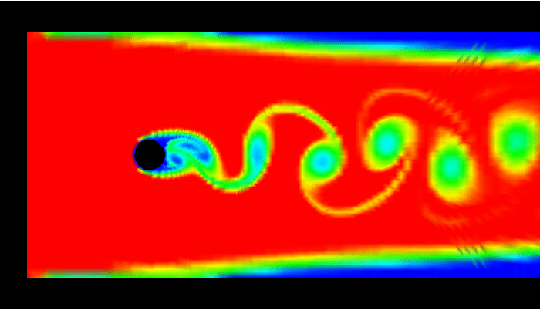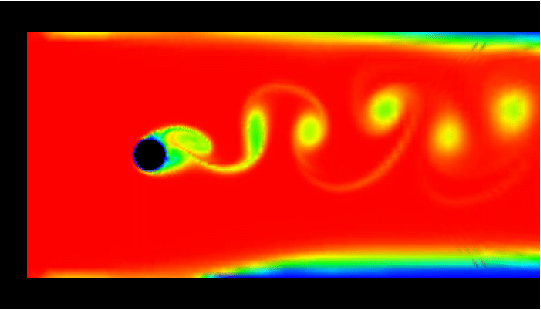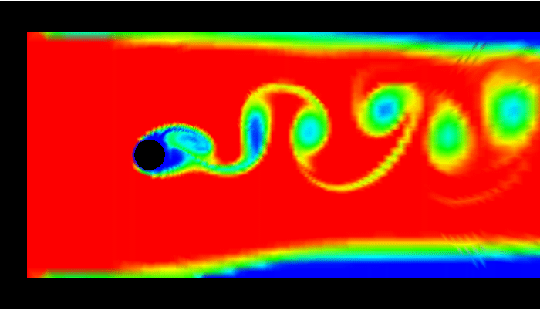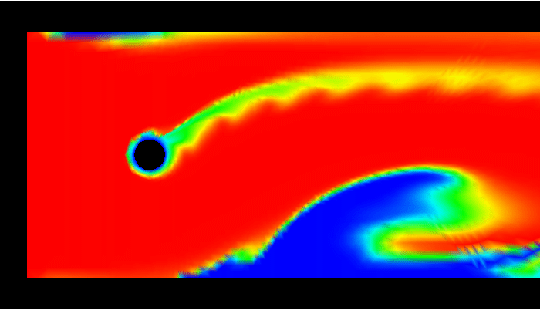
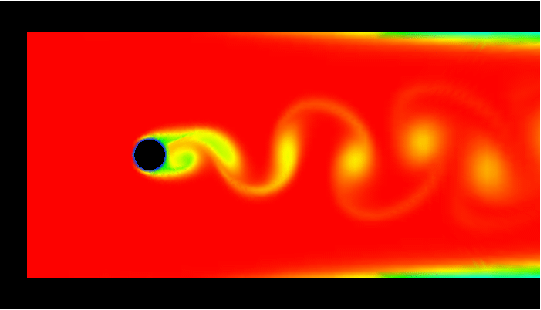
The following examples show flows through channels, around a
set of obstacles, as for instance circles and balls.


Right after the obstacle(s), the flow separates and produces complex flow patterns, oscillating in space and time. In many applications, the corresponding drag and lift forces acting on the obstacle(s) are of major interest, and a difficult numerical job to do! The complexity of the problem depends on the:
Flow around a (volley)ball in a channel at medium Reynolds
number. The aim of this study by students is to demonstrate the
influence of the rotation of a volleyball.
The values to be controlled were the drag and lift forces which mainly
determine the length and speed of a service, and the difficulty of
return.
The following diagrams show the resulting drag and lift
coefficients in time. While the speed of the (volley)ball was assumed
to be 1.5, the rotational speeds were 0 (no rotation!), 0.1, 1 and 5.
While the first three configurations (rotation speed less or almost
equal the speed of the ball) are very similar, the fourth leads to
non-comparable results.

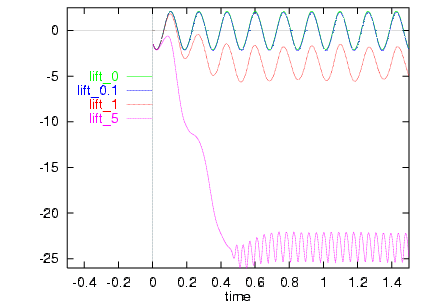
As can be seen, the additional rotation leads to more negative
lift coefficients (that means the ball will "break sooner"), and the
drag forces increase!For a comparison, see the corresponding results
for the higher Reynolds number configuration. It might be interesting
to make the same tests for a even more realistic Reynolds number,
without a channel configuration, and to examine the effect of
additional 3D effets.
Description of the flow problem
Description of the spatial discretization

Description of the temporal discretization
Visualization via tracing of concentration, starts from
the inlet. Each row contains the videos for a zoomed representation
with two different color maps (all about 1.1 MB, resp., 1.5 MB), and
the video for the complete domain (about 0.9 MB each). The first row is
for rotational speed 0 (no rotation), then followed by 0.1 (second), 1
(third) and finally for rotational speed 5 (fourth row).

